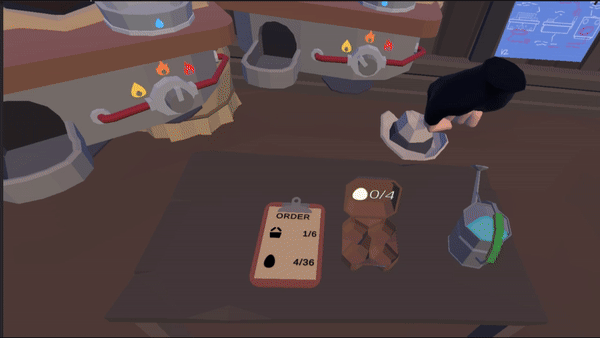Portfolio Website
Chicken Farm
A virtual gamified rehabilitation exercise for shoulder musculoskeletal patients where players must complete tasks for the chickens to collect eggs in order to stretch their arms
For a more detailed paper about Chicken Farm, check out my school portfolio: https://portfolio.drieam.app/s/GuxUr36X/AGYX2kdQiYcrssTaQdF4H2mM
Introduction
Demo
Summary
Chicken Farm is my graduation project for my Bachelor degree of ICT at Fontys hogescholen in Eindhoven.
I worked for my graduation internship at InMotionVR for 20 weeks, which is a serious games/healthcare company that focuses on creating virtual games for rehabilitation patients with the usage of gamification, virtual reality and sensors. Their product, CorpusVR, consists of multiple games that would train areas such as the neck, back, arms and legs. CorpusVR also offers customization and personalization to patients, making the game adapt based on their limits which the therapist can adjust to challenge them.
My Contribution
For this project, I was working solo both as a developer and designer but also as a product owner. My project was to research and develop a prototype for a game concept for patients to rehabilitate from a shoulder MSK (musculoskeletal complaint). During the project, I focused on creating prototypes that gamified Shoulder MSK exercises as well as adding mechanics that would increase the player’s motivation. These prototypes were tested with external experts such as a group of physiotherapists or rehabilitation patients to see if the prototype causes users to perform the exercise more frequently then without the headset.
Process

Dynamic Range of Motion
One of the big problems within the project was getting the users to performing the stretching exercise, the serratus punch, since users never stretch as a first reponse but rather would lean forward when trying to grab something they can’t reach.
To solve this, I’ve designed a system called the Dynamic Range of Motion (DRoM) where it would measure the distance of how far the player can reach and dynamically keep it attached to the player to always make sure that objects in the DRoM will keep a fixed distance between the player, which forces them to stretch their arms.


Motivators
Another important aspect was designing and developing mechanics to motivate the user to continue performing the exercise. Without motivation, the player can stop playing and not complete it. There are two types of motivation, extrinsic and intrinsic.
For extrinsic motivation, I designed rewards the player can obtain, from small ones such as a particle when completing a task to big rewards such as an egg or a hat which can be used on the chickens.
For intrinsic motivation, I created “secret mechanics” which would reward players for their curiosity and exploration, such as different colored eggs or petting the chickens, which rewards them with progress. These mechanics aren’t introduced in the loop and are only accessible by the player’s curiosity.